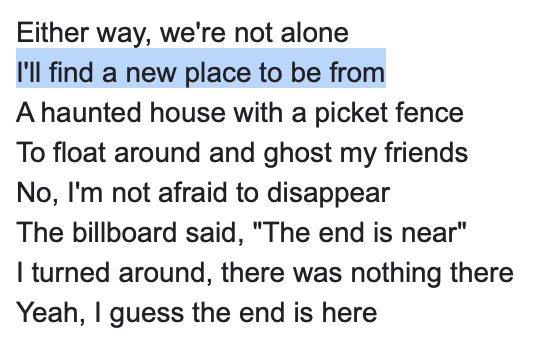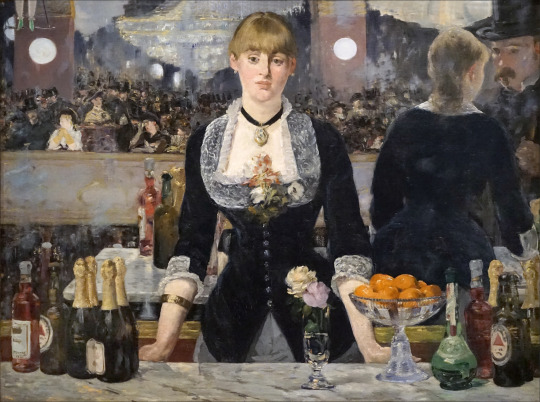#a bar at the flies-bergere manet
Text








not quite here and not quite there
#smile and nod and scroll on if you'd like team i'm just getting a feeling out here#she's using breakup songs to explain her relationship with feeling disconnected from places shes called home !! someone stop her#um to be clear. i think i'm mostly through it. and i'm latching onto i know the end for other reasons at the minute#but we move#in order:#buzzcut season lorde#i know the end phoebe bridgers#summer night 1890 winslow homer#my tears ricochet taylor swift#two slow dancers mitski#a bar at the flies-bergere manet#i've wanted you first aid kit#(shocker)#writer in the dark lorde#the day i first saw a web weaving post the timeline shifted to a darker place
257 notes
·
View notes
Text
Week Nine: Chapter 24 and 25
Chapter 24:
The twenty-fourth chapter in the textbook is over the topic of Nineteenth Century Impressionism. This style developed in the 1860s – in Paris, France. This style was able to remain prevalent until the twentieth century.
Impressionism focused on capturing leisure activities, entertainment and views of various kinds. I found it very interesting about how, in stark contrast to previous chapters, Impressionism was not really affected by politics. Part of this stems from the subject matter that Impressionism focuses on, but it really just astounds me that there is such a huge change from the previous changes in art caused by politics.
Impressionists studied changes in natural light, and color changes caused by weather, time, and seasons. Shadows and reflections were very important in this movement. I personally really enjoy looking at artwork that has a focus on shadows. Interesting shadows can really push a painting for the better, in my opinion.
One painting that really showed the way artists were using reflections is Edouard Manets A Bar at the Flies-Bergere. This painting depicts a barmaid, facing the view straight on. In the mirror, you can see the reflection of the barmaid and the customer, as well as more customers in the distance, eating and talking- setting the stage. I really like this painting because it shows two views of the same person, and is just very interesting, only seeing the customer in a reflection, instead of truly in view.
Another painting I found interesting this chapter was James Abbot McNeill Whistlers Nocturne in Black and Gold. I found it pretty hilarious how people were getting mad at him for this painting, even going to court for it in November 1878. I found it very interesting about how this painting was a mess of various things, but somehow just has an inherent appeal to it.
Chapter 25:
The previous chapter touched on Impressionism, while this chapter explains about Post-Impressionism, or After Impressionism. Keeping close to its namesake, Post-Impressionist painters were very influenced by Impressionist painters. They both used bright color as well as distinctive brushstrokes. However, in contrast to Impressionism, Post-Impressionist artists did not dissolve the edges of forms, but defined the edges with sharp color separations.
One painting I enjoyed reading about in this chapter was Paul Cezanne’s Self-Portrait. I found this painting so interesting because of the seemingly textured look to it. You can see every single brushstroke of this painting- characteristic of Post-Impressionist paintings. I also enjoyed this painting because of the dark colors and shadows used, creating a very interesting image overall.
There is one other famous painting I could not help but mention. Vincent van Gogh’s The Starry Night. This famous painting depicts and city and a night sky, with every single brushstroke being able to be seen, and distinctive forms. This is truly a amazing painting, and it fits perfectly with Post-Impressionism, and is a perfect example of it.
The chapters for this week were a very interesting read. I look forward to reading next week’s chapter.
Thanks,
Eric
0 notes